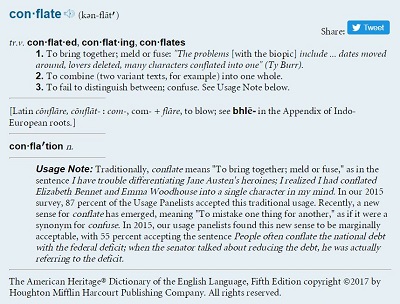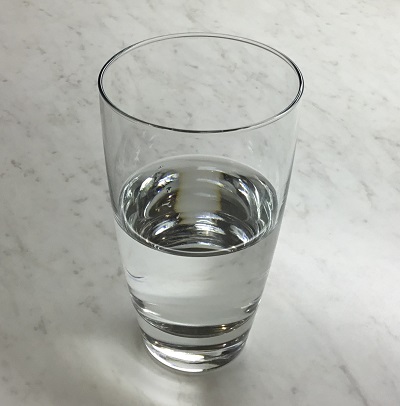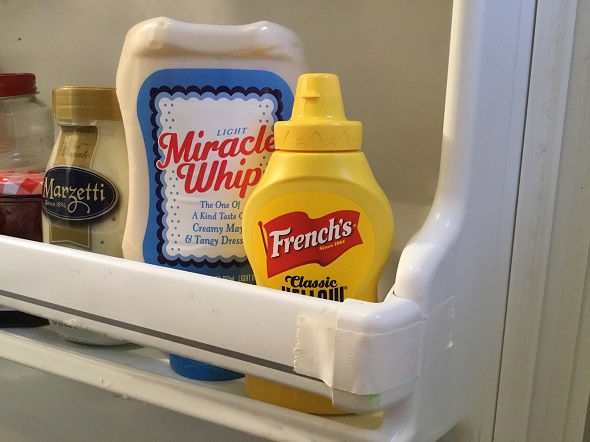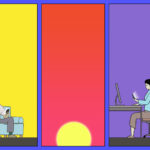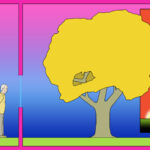In the moment when a longing to use a problematic substance arises, or the opportunity to use it appears, if I can become aware of my longing, strong-arm my attention away from my longing and toward my preferences, I can increase my chances of not using.
If I have substance use disorder, why a longing arises has complex origins. In the moment, I don’t have time to figure any of that out. I can endanger myself and others with a return to use. I need something to work for me right now.
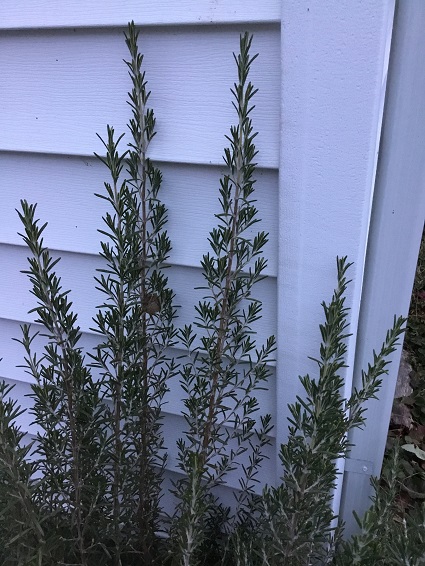 The ability to use one’s attention with gentle but intentional force may be a fundamental skill for preventing a return to use. I draw that conclusion from my relentless review of the research on addiction, my professional training, my observation of the experience of others, and my personal experience.
The ability to use one’s attention with gentle but intentional force may be a fundamental skill for preventing a return to use. I draw that conclusion from my relentless review of the research on addiction, my professional training, my observation of the experience of others, and my personal experience.
To set myself up to be able to use my attention with intentional force:
- I need to gain awareness, in the moment, of my longing to use.
- Prior to the moment of the longing to use, I need to have already collected the data described below, practiced the skills, and trained with that data.
- In the moment, I need to skillfully use the process described below to give my best attempt to help myself not use.
- Repeat.
“Indeed, lack of awareness of substance craving has been shown to be predictive of future relapse.”
– Garland, et al., 2013
Awareness
I practice on-going awareness of what’s going on with me so I can instantly become aware – in the midst of the wonder and complexity of being me in this astonishing world – of a longing to use. To do this, I focus on my feelings, thoughts, physical sensations, and actions.
I ask myself:
- “What am I feeling?”
- “What am I thinking?”
- “What am I sensing?”
- “What am I doing?”
Further help with practicing awareness:
- Practicing Awareness: Awareness Check-in
- Practicing Awareness: How I Help Myself Now to Handle What’s Next
- Practicing Awareness: Inner Dialogue
Data
List 1: Real-Time Sensory Experiences
I need to be able to shift my attention from substances and using to something else. Any old thing will not do. Our preferences make us gloriously ourselves and have the power to draw our attention. The brain is particularly called by sensory experiences. I need to discover and know my preferences, starting with sensory preferences.
What do I prefer to see, hear, taste, touch, and smell? What motion do I prefer to observe?
Worksheet: Discovering My Sensory Preferences. Printable .pdf opens in a new tab. More handouts are here.
One easy way to get started with answering these questions is to take “sensory tours.” I’ve taken sensory tours of my kitchen, living space, yard, a department store, and my town. I become aware of several things I prefer within each sensory category. Then I rank order my options. What would I most prefer for that sense? What would be my second choice? I try to keep at least one of these top-ranked, preferred sensory items with me.
List 2: Imaginary Sensory Experiences
In the moment of longing, I may not have my preferred sensory items at hand. I may not be able to get them. So, the additional data I need to collect is an imagined set of sensory preferences.
If time, space, and money were of no concern, what image would I love to see? What sound would I love to hear? What would I love to taste? What texture would I love to feel? What scent would I love to smell? What would I love to see in motion? I keep a mental list of these sensory experiences.
List 3: What’s at Hand
I may feel flooded with longing, feel alarmed by its intensity, and be unable to remember my sensory items. I look around at my surroundings. I ask myself, “What is my preferred sensory item here?” I engage my attention with it.
List 4: The Breath in My Nostrils
If I’ve got nothing at hand, or I’m in a particularly threatening situation, I may need to shift my attention to the ever-present sensory experience that I own: the sensation of air in my nostrils as I breathe. Taking deep breaths can trigger panic and offer a “tell” about my distress to those I don’t trust. I can engage my attention with the sensation of the air in my nostrils with even the tiniest breaths.
Skills
Here’s the sequence for how to gain muscular control of attention:
- Become aware of my attention on that.
- Disengage my attention from that.
- Shift my attention to my preference.
- Engage my attention with this preference.
Become aware > Disengage > Shift > Engage
To have this happen automatically, I need to practice the sequence and train my attention.
I collect some of my preferred sensory items. I put them on a table or on the floor in front of me. I become aware of my attention on one item. I imagine having my hand lightly on the top of the item. I give it my full attention for a moment. Then I disengage my attention from the item by imagining opening my hand. I shift my attention by imagining my hand and arm moving in mid-air from that item to another item. I engage my attention with this item by imagining placing my hand on top of it. I give it my full attention for a moment. Then I disengage, shift, and engage, continuing to practice the sequence, moving from object to object.
Process
Here’s the inner dialogue for the process I use to bring together awareness, data, and skills, and practice when a longing arises or an opportunity to use appears.
- I have become aware of a longing to use.
- I acknowledge this reality with courage, self-kindness, and without judgment.
- I will now strong-arm my attention.
- I disengage my attention from longing, substances, and using
- I become aware of my preferences, either present or imaginary.
- I shift my attention to them, and I engage my attention with my preferences.
- When my attention is drawn back to longing, substances and using, I strong-arm my attention back to my preferences.
- I continue to strong-arm my attention until the longing passes, until I can get help from someone, or I can leave the situation.
In the moment, this straightforward, mechanical process, distilled from neuroscience findings on addiction and attention, might protect me from a return to use. Sometimes, strong arming my attention doesn’t work. That’s when research suggests I need to interrupt my neurobiology by splashing cold water on my face. If that’s not available, I can press something cool to my face, even if it’s my own cold fingers or the side of a pen. Then I can attempt to engage my attention sequence again.
To manage my longing for substances by managing my attention, the only self-analysis required is awareness of what’s going on within me in the moment. It requires no assessment of my past, my motivations, or my morals. The only inventory it requires is discovering what delights my senses, then making lists of my preferences. Practice and training can happen anywhere, anytime. The only equipment needed is imagination.
While some addiction treatment protocols recommend using distraction to interfere with craving, distraction is a symptom of substance use disorder. Longing to return distracts me from my plans for my life. Distraction has too much power in my life already and tries to make me do what it wants. With the power of attention, I may be able to counterbalance this symptom and choose to do what I want. I can certainly rest my mind by watching TV, listening to music, or playing a video game, but I want my action to be a conscious choice resulting from me having given it my full attention.
When a longing arises and it’s showtime – on-demand, never scheduled – part of my performance will be limited by the changes my brain has undergone through addiction. I get that. I also get that my brain’s ability to exert will has been compromised by addiction. That’s going to hurt my efforts. Still.
If I can use gentle but intentional force on my attention, practice, train often and intensely enough to gain enough endurance to shift my attention over and over again, I might just be able to help myself not use.
. . . . .
This post is part of a series on evidence-informed self-care for addiction. Self-care is NOT an evidence-based treatment for addiction. However, when treatment is scarce or denied, people with addiction must take treatment matters into their own hands. The introduction and table of contents are here and posts are published in the category entitled Guide.
The views expressed are mine alone and do not necessarily reflect the positions of my employers, co-workers, clients, family members or friends. This content is for informational purposes only and is not a substitute for medical or professional advice. Consult a qualified health care professional for personalized medical and professional advice.
